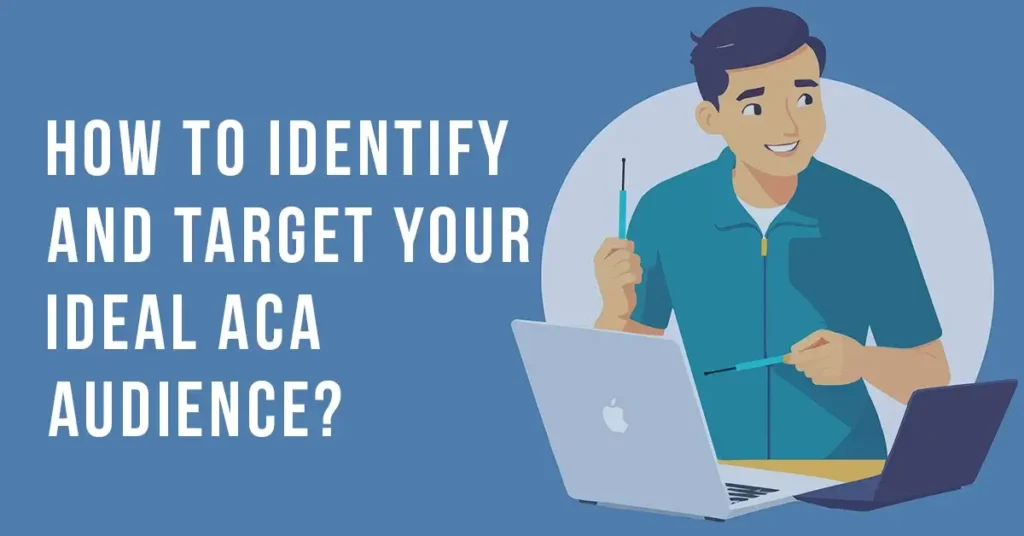
In 2024, the Affordable Care Act (ACA) continues to play a pivotal role in the U.S. healthcare system, with over 21 million individuals selecting Marketplace plans during the 2024 Open Enrollment Period which is a significant increase from previous years. As we look ahead, understanding and effectively targeting the ideal ACA audience remains crucial for health insurance marketers aiming to connect with those who can benefit most from ACA coverage.
This blog will explore various strategies for pinpointing the right demographic for ACA Audience and ACA lead generation, offering actionable insights and best practices for health insurance marketers.
Key Takeaways:
- Rising Enrollment: Over 21 million individuals selected ACA Marketplace plans during the 2024 Open Enrollment Period, marking a historic high.
- Demographic Focus: Target key groups such as low-income individuals, uninsured populations, young adults, minority communities, and those with pre-existing conditions to maximize ACA enrollment.
- Data-Driven Targeting: Utilize public health data, insurance claims, and GIS mapping to identify high-need areas and tailor marketing strategies effectively.
- Digital Marketing Impact: Leverage social media advertising, SEM campaigns, and content marketing to reach audiences actively searching for ACA coverage.
- Community Partnerships: Collaborate with local health departments, NGOs, and cultural institutions to engage hard-to-reach populations.
- Advanced Tools: Implement CRM systems, lead scoring, and analytics to streamline targeting, improve lead quality, and enhance campaign performance.
Table of Contents
What Is a Target Audience?

Your target audience is the group of people most likely to want or need your product or service, making them the ideal recipients of your advertising efforts.
You can define your target audience using various demographics like age, gender, income, location, interests, and more.
Types of Ideal ACA Audiences:
You can also break down your target audience into smaller groups based on what they want, where they are, and what they’re interested in. Let’s take a look at examples of ways that you can break up your target ACA audience:
- Interest:
Subdivide working groups by the various interests identified among the people such as needs and entertainment. This helps you create personalized messages that truly resonate with your customers, strengthening your brand’s reputation.
- Purchase Intention:
Identify segments of audiences in the market seeking particular goods, for instance, homes, insurance, or cars. This will in turn assist you to know the kind of information your ACA audience requires to be satisfied hence allowing you to develop the right messages to present to them.
- Subcultures:
Subcultures deal with people who have some things in common, for instance, the type of insurance they want or the kinds of needs they have. Some of your targeted consumers’ interests can provide some insights into whom you are trying to reach.
Key Demographics For ACA Enrollment:
To optimize ACA lead generation, focus on the following demographics:
- Low-Income Individuals and Families: FPL of 100 to 400 percent recipients are eligible for subsidies.
- Uninsured Individuals: Want desperately and are in dire need of health insurance and cannot afford it on their own or receive it from their employers, or any other related cover.
- Young Adults: Sometimes referred to as the “young invincible” this group rarely embraces health insurance because they feel that they cannot be affected.
- Minority Communities: Many of these groups are vulnerable to attaining healthcare services and would stand to gain when enrolled under ACA coverage.
- Individuals with Pre-existing Conditions: Due to the guaranteed accessibility and relatively low cost, people with a pre-existing condition are more likely to be drawn to ACA.
Data-Driven Strategies For Identifying Your ACA Audience:
Utilizing data analytics can enhance your targeting efforts:
- Public Health Data: Leverage information from sources like the Census Bureau and the Centers for Disease Control and Prevention (CDC) to identify areas with high uninsured rates and health disparities.
- Insurance Claims Data: Analyze claims to pinpoint regions with high medical expenses and chronic disease prevalence, indicating a need for ACA coverage.
- Geographic Information Systems (GIS): Use GIS technology to map demographics and identify clusters of uninsured individuals, aiding in targeted marketing efforts.
Digital Marketing Strategies For ACA Audience:
Implementing digital strategies can significantly boost your outreach:
1. Social Media Advertising:
Most social media platforms such as Facebook, Instagram, and Twitter have strong targeting characteristic features that focus on demography, interest, and behavioral information.
- Custom Audiences: In this case, it suggested that Facebook advertisers must use ACA enrollee data to construct custom audiences. Facebook for instance enables its users to upload their lists of contacts, and the network searches for similar users.
- Lookalike Audiences: Develop audiences that are similar to your most successful segment groups. This can prove effective in reaching out to other people who are in the segment of the population similar to those who have enrolled in ACA.
- Geo-targeting: Organize advertising for zip codes or cities with a larger percentage of people without insurance.
2. Search Engine Marketing (SEM):
The SEM and in particular Google Ads can be used to attract the right audience that is actively looking for health insurance.
- Keyword Research: Term association about ACA, Obamacare, and Health insurance. And target keywords that show search intents, like “family health insurance,” and “ACA sign-up assistance.”
- Ad Extensions: Utilize ad extensions to provide additional information and direct links to resources or contact forms.
3. Content Marketing:
As a non-promotional method of marketing, it can inform enrollees-in-potential about the pros of preserving ACA and enrollment in it.
- Blog Posts and Articles: One must write information, that answers most of the people’s questions and concerns about the Affordable Care Act. Some of the topics could be; how to qualify for subsidies; how to get subsidies for health insurance; advantages of having a health insurance policy.
- Video Content: Produce creative and interesting videos to educate viewers on what the ACA is, people’s testimonies, and the process of signing up. These formats of works can be uploaded to social sites, shared in the blog, and used in different emails.
- Webinars and Live Q&A Sessions: Webinars and live sessions offer real-time information when they are conducted and questions are answered. This interaction format can help create trust and make people sign up.
Community Engagement and Partnerships:
Collaborating with local organizations can enhance trust and outreach:
- Local Health Departments: Partner to reach communities less active online but in need of ACA coverage.
- Non-Governmental Organizations (NGOs): Work with groups focused on health, poverty, and minority issues to access target demographics.
- Religious and Cultural Institutions: Engage with these organizations to connect with diverse populations.
Offline Marketing Approaches:
1. Direct Mail Campaigns:
This means direct mail can be very useful in reaching people who perhaps are not very active on the internet. Information about dealing with incoming mail showed that items addressed directly to a customer can easily get a response if they contain clear-cut calls to action.
- Targeted Mailing Lists:
To create effective mailing lists, focus on these groups:
- People with a certain monthly income.
- People within a specific age range.
- People who currently don’t have health insurance.
- Educational Materials:
Create brochures or flyers that explain how to enroll in ACA coverage. Make them available to anyone who wants to learn more
2. Community Events and Health Fairs:
Hosting or participating in community events like health fairs is a great way to connect directly with people who might want to enroll in health insurance.
- Information Booths: Make stations with flyers and applications that people can fill out and give to them.
- Free Screenings: Regarding entertainment encourage free health checkups so that a chance to talk about ACA Audience coverage can be availed.
Utilizing Technology and Tools:
1. Customer Relationship Management (CRM) Systems:
Effective CRM will allow you to manage communications with potential leads and filter the target audience, as well as perform follow-up messages automatically.
- Lead Scoring: Use a lead scoring system to figure out which potential customers are most interested and likely to sign up. This helps you focus your efforts on the people who are most likely to become paying customers
- Automated Follow-Up: Set up automatic email and text message responses to guide interested people through the enrollment process. Create specific pages on your website that trigger these messages as soon as someone shows interest.
2. Analytics and Reporting:
You should also make use of analytical tools like Google Analytics the determine the success of your lead generation. Some of the measures that must be kept constant include conversion rates, cost per lead, and ROI.
- A/B Testing: The campaigns that you launch should be tested using the A/B test to find out what exactly works well in terms of the right message to pass and the right channel to use to pass that message.
- Performance Dashboards: Implement the required campaigns to track and monitor their progress and generate the interactive campaign dashboard for effective decision-making.
Addressing Challenges In ACA Lead Generation:
Be prepared to tackle common obstacles:
- Misinformation: Counteract myths and inaccuracies about the ACA through educational campaigns and by leveraging trusted community figures.
- Regulatory Changes: Stay informed about policy updates to ensure compliance and adapt marketing strategies accordingly.
Conclusion – ACA Audience:
Effectively identifying and targeting your ACA audience requires a comprehensive approach that combines data analysis, digital marketing, community partnerships, and technological tools. By understanding the specific needs and characteristics of potential enrollees, health insurance marketers can enhance outreach efforts, ensuring that more individuals gain access to affordable healthcare coverage through the ACA.
FAQ’s:
Who is the target audience for the ACA?
The ACA targets low-income individuals, uninsured persons, minority groups, young adults, and those with pre-existing conditions. These demographics often face barriers to affordable health insurance.
